14 Legendary American Animals Wildlife Lovers Should Experience
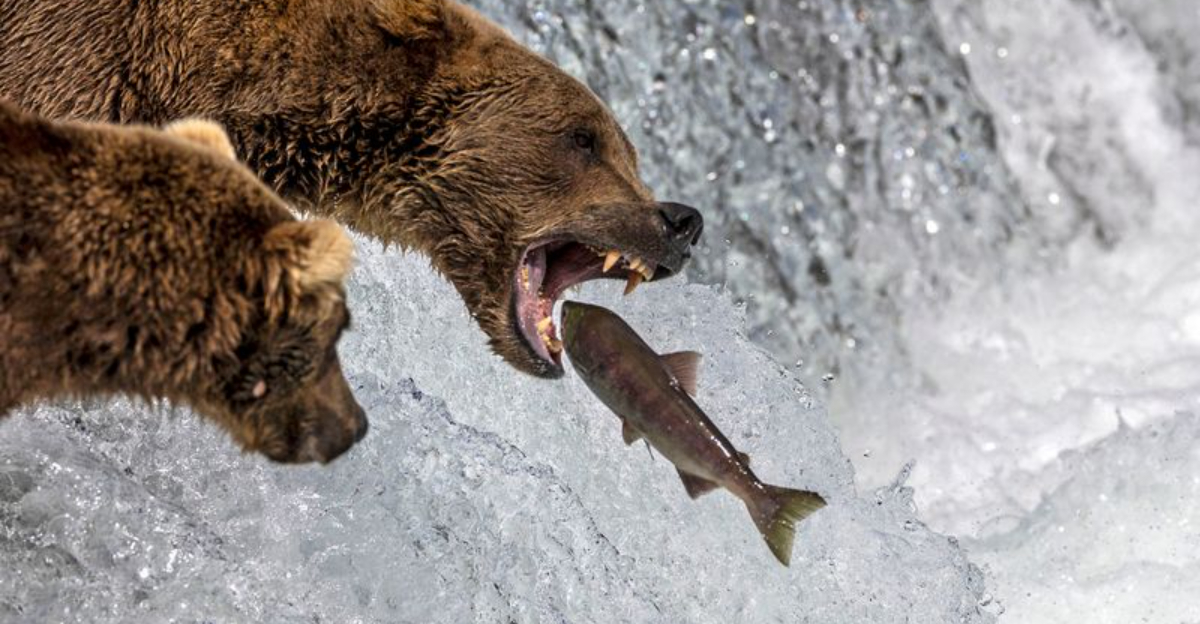
America’s wilderness holds incredible creatures that captivate our imagination and remind us of nature’s wonder. From magnificent predators to gentle giants, these animals represent the rich biodiversity that makes our country’s ecosystems so special.
Whether you’re an avid wildlife photographer or simply love animals, spotting these iconic species in their natural habitats creates unforgettable memories that connect us to the wild heart of America.
1. Majestic Bald Eagle

Soaring high above mountain lakes and coastal shores, our national symbol embodies freedom and strength. These magnificent birds can spot fish from nearly a mile away with vision about eight times sharper than humans.
After coming dangerously close to extinction in the 1970s, bald eagles have made a remarkable comeback. Their population recovery stands as one of America’s greatest conservation success stories.
Adult eagles develop their distinctive white head and tail feathers around age 5. With a wingspan reaching up to 8 feet and the ability to live 20-30 years in the wild, witnessing these raptors in flight leaves an indelible impression on any wildlife enthusiast.
2. Elusive Gray Wolf
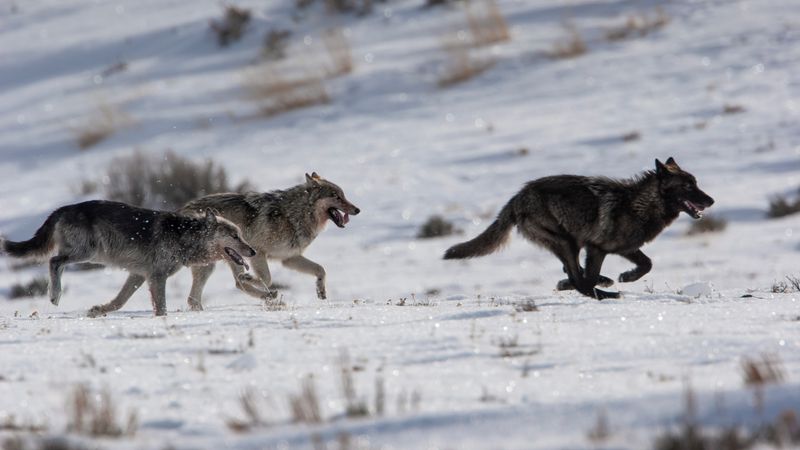
The haunting howl of gray wolves echoing through forests represents wild America at its core. Once nearly eliminated from the lower 48 states, these intelligent predators have been reintroduced to places like Yellowstone, where they’ve helped restore natural balance.
Wolf packs function as tight-knit family units led by an alpha pair. Their complex social structure includes elaborate communication through body language, scent marking, and those famous howls that can carry for miles.
Catching a glimpse of these phantom-like creatures requires patience and luck. Dawn and dusk offer the best opportunities in places like Lamar Valley, where wolves hunt elk across snow-covered meadows.
3. Massive American Bison
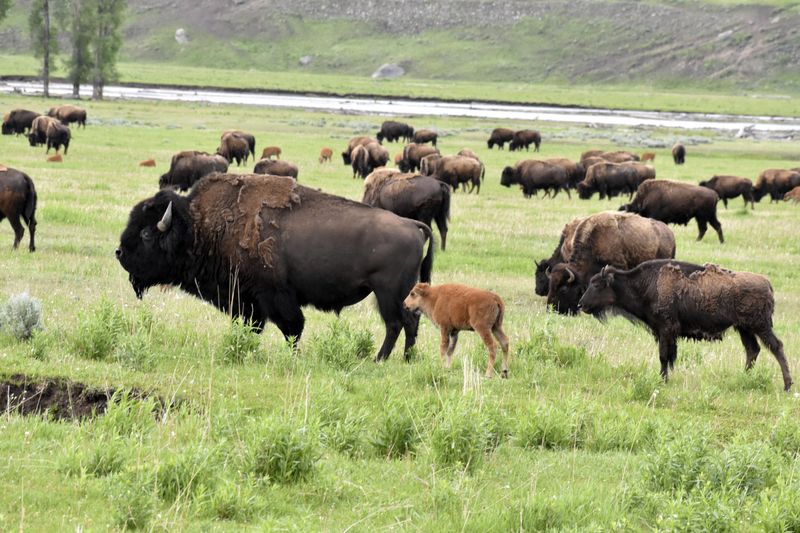
Nothing captures the spirit of the American prairie like the sight of bison grazing across grasslands. These one-ton behemoths once numbered in the tens of millions before being hunted to near extinction.
Modern conservation efforts have brought bison back from the brink. Today, herds roam protected areas like Yellowstone and Theodore Roosevelt National Parks, offering glimpses into America’s wild past.
Despite their bulk, bison can sprint at 35 mph and jump six feet vertically. Their massive heads serve as snowplows in winter, sweeping aside deep snow to reach buried grasses. Standing before these woolly giants connects you to the ancient heartbeat of the American wilderness.
4. Powerful Grizzly Bear
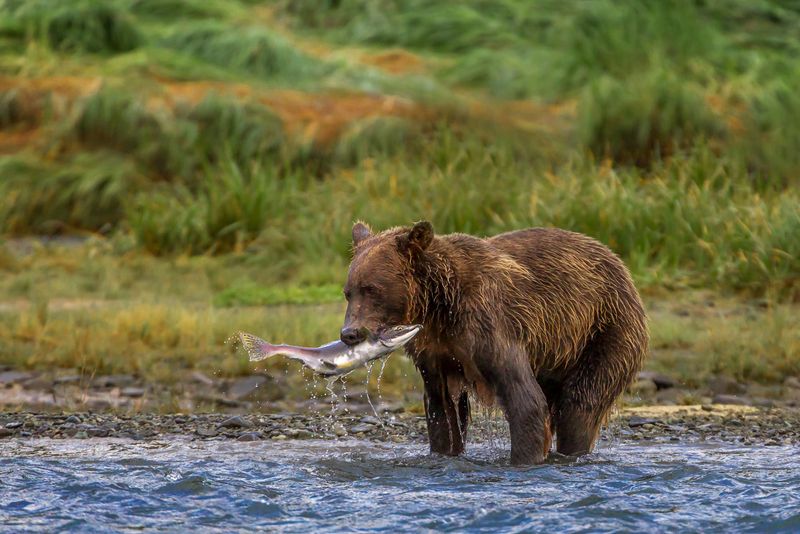
Few wildlife encounters stir the soul like watching a grizzly bear fishing for salmon or digging for roots. With massive shoulders, long claws, and incredible strength, these apex predators command respect throughout the American West.
Grizzlies possess remarkable intelligence and memory, remembering food sources for years. Their sense of smell outperforms bloodhounds, detecting scents from miles away and even smelling food buried underground.
Females fiercely protect their cubs for 2-3 years, teaching essential survival skills. Witnessing these magnificent creatures in places like Katmai National Park offers a humbling reminder of nature’s raw power and the importance of preserving wild spaces for these iconic animals.
5. Graceful Pronghorn Antelope
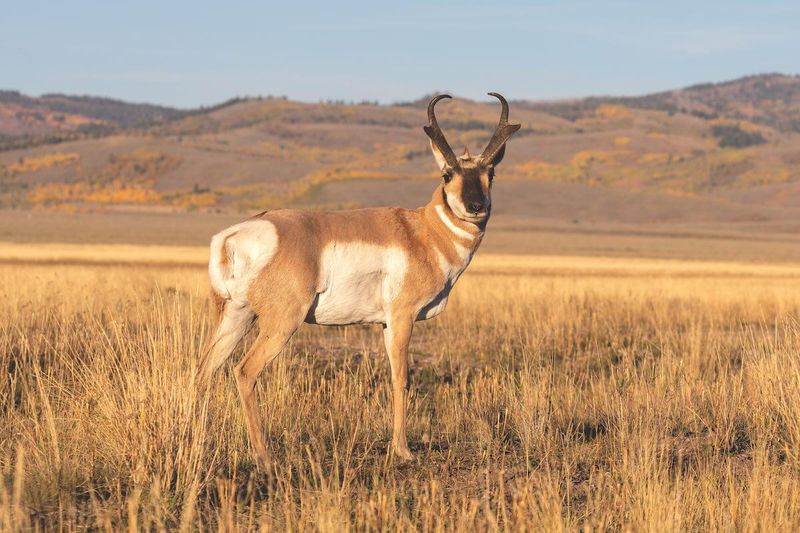
America’s speed champion races across western plains at up to 60 mph, making pronghorns the second-fastest land animal on Earth. Their oversized heart, lungs, and windpipe evolved to outrun predators that no longer exist – cheetah-like cats that disappeared 12,000 years ago.
Unlike true antelopes, pronghorns belong to a family that evolved exclusively in North America. Their huge eyes provide almost 360-degree vision, helping spot predators across vast open landscapes.
Fall brings dramatic migrations as pronghorns travel ancient pathways between summer and winter ranges. Watching a herd bound effortlessly across sagebrush country in Wyoming or Montana showcases evolution’s perfect design for life on the open prairie.
6. Mysterious Mountain Lion
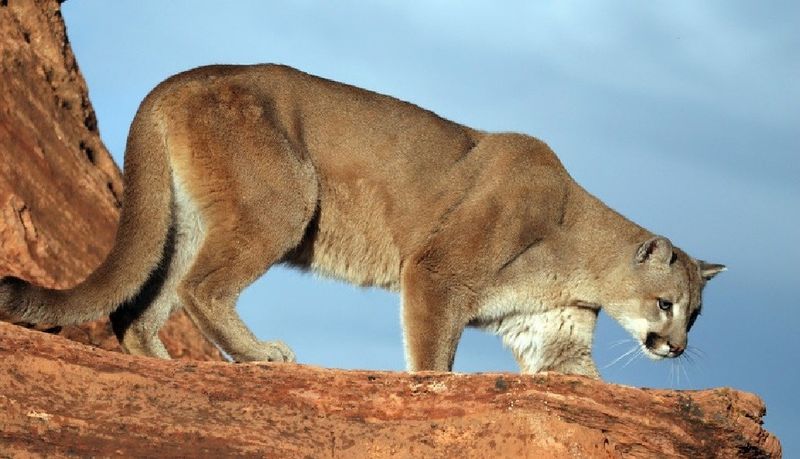
Ghost of the wilderness, the mountain lion moves silently through forests and canyons across America. Also called cougars or pumas, these solitary cats leave few clues of their presence despite weighing up to 200 pounds.
Masters of adaptation, mountain lions thrive in deserts, mountains, and forests from Florida to California. Their powerful hind legs enable 40-foot leaps and 15-foot vertical jumps, making them extraordinary hunters.
Spotting one in the wild represents an extremely rare privilege. Most encounters last mere seconds as these secretive cats prefer avoiding humans. Places like California’s Santa Monica Mountains offer remote chances to glimpse America’s largest cat – a creature that embodies the wild mystery still present in our most rugged landscapes.
7. Industrious American Beaver
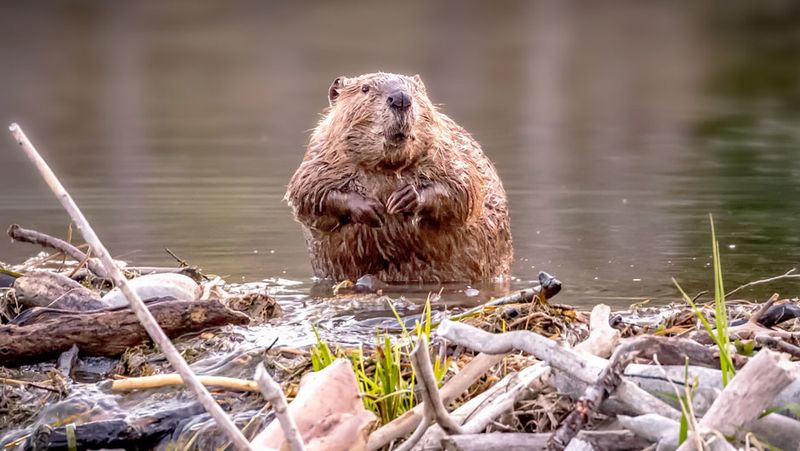
North America’s largest rodent transformed the continent’s landscape and history. Beaver ponds create wetland habitats supporting countless species, while their valuable fur drove exploration of the American wilderness.
These engineering marvels build complex dams and lodges using trees they fell with specialized teeth. A single beaver family can construct a dam stretching hundreds of feet, creating ponds that protect their underwater lodge entrances.
Watching beavers at work during dawn or dusk hours reveals their remarkable intelligence. Their construction skills include building canals to float logs and incorporating underwater food caches for winter survival. These industrious creatures demonstrate nature’s incredible ability to modify environments, making them fascinating subjects for wildlife observers.
8. Clever North American River Otter
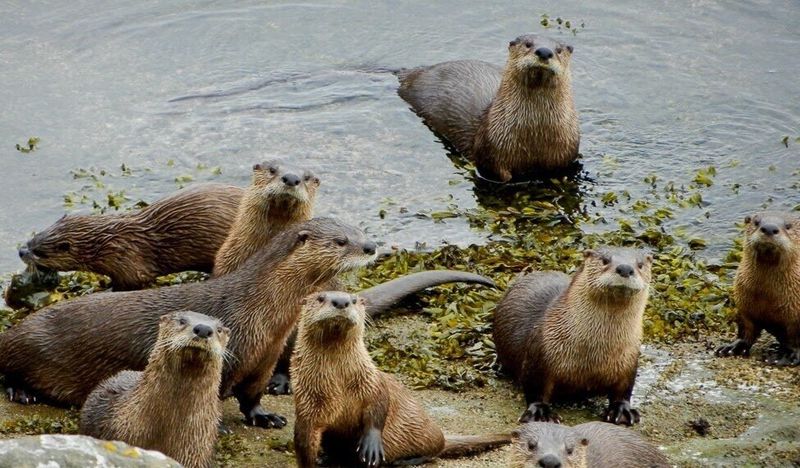
Playful personalities make river otters the clowns of American waterways. Watching them slide down muddy banks, wrestle with siblings, or perform underwater acrobatics brings joy to any wildlife encounter.
Beyond their entertaining antics, otters serve as indicators of healthy ecosystems. Their return to rivers and lakes often signals improving water quality and fish populations.
Dense fur containing up to a million hairs per square inch keeps them warm in frigid waters. Their remarkable swimming abilities include closing ears and nostrils underwater and remaining submerged for up to eight minutes. Spotting these charismatic mammals along waterways in places like Yellowstone, Olympic National Park, or the Everglades provides glimpses into their fascinating aquatic lifestyle.
9. Iconic Moose

Standing taller than a horse with antlers spanning six feet, bull moose create unforgettable impressions. These massive browsers wade through northern lakes and marshes, sometimes submerging completely to reach aquatic plants.
Despite their imposing size, moose move with surprising grace through forests and wetlands. Their specialized nose and upper lip function like a flexible hand for stripping leaves and twigs.
Fall brings the dramatic rut season when bulls battle for mating rights, clashing massive antlers in spectacular displays of strength. Places like Isle Royale National Park, Maine’s Allagash Wilderness, and Alaska’s Denali offer opportunities to witness North America’s largest deer species in their element – a primeval experience connecting observers to the ancient rhythms of northern forests.
10. Endangered Florida Panther

The rarest big cat in America prowls the swamps and forests of southern Florida. With fewer than 200 remaining in the wild, spotting this endangered subspecies of mountain lion represents an extraordinary wildlife encounter.
Conservation efforts have helped panthers slowly recover from a population that once dipped below 30 animals. Their territory requirements span vast areas – up to 200 square miles for a single male, making habitat preservation crucial for their survival.
Florida Panthers National Wildlife Refuge and adjacent protected lands offer the best chance to glimpse these elusive cats. Dawn drives along remote roads might reveal their tawny forms slipping through saw palmetto or crossing trails. Seeing this living symbol of wild Florida creates a powerful connection to one of America’s most endangered mammals.
11. Magnificent Alaskan Brown Bear
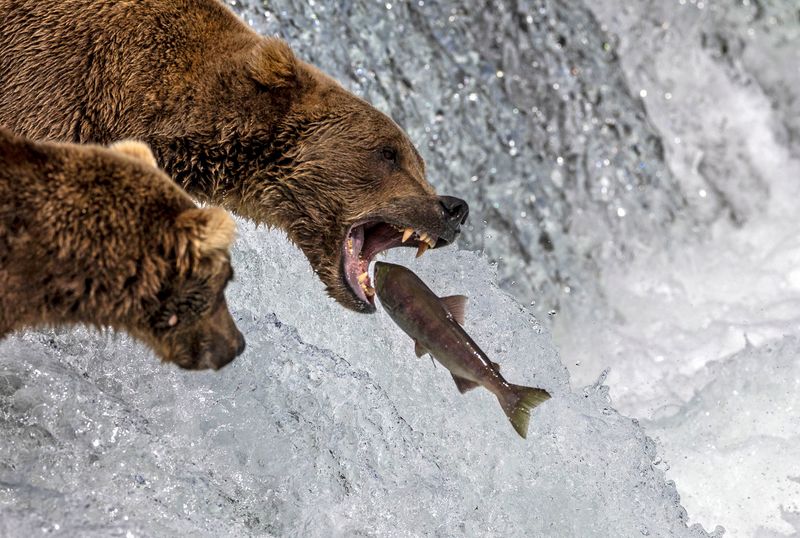
Coastal brown bears gathering at salmon-filled rivers create one of North America’s most spectacular wildlife displays. These enormous omnivores can weigh over 1,500 pounds after fattening up for winter hibernation.
Brooks Falls in Katmai National Park offers front-row seats to watch these massive bears catch leaping salmon. Their fishing techniques vary from standing atop waterfalls with open mouths to spectacular diving catches in deeper pools.
Mother bears demonstrate remarkable parenting skills, teaching cubs fishing techniques that will sustain them throughout life. The bears’ surprising tolerance of each other during salmon runs creates unique opportunities for wildlife viewers to observe multiple animals simultaneously – a breathtaking display of nature’s abundance and the critical connection between healthy ecosystems and these magnificent mammals.
12. Resilient Gray Whale
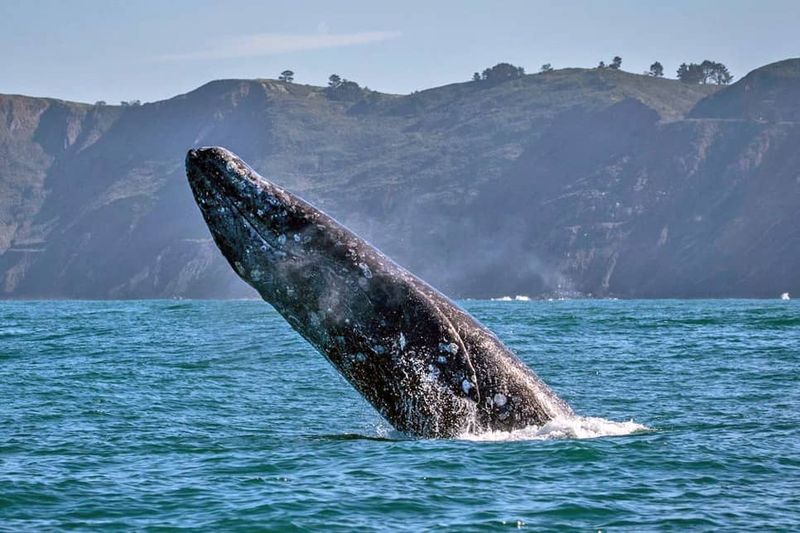
Traveling 10,000 miles annually between Arctic feeding grounds and Mexican breeding lagoons, gray whales undertake one of Earth’s longest migrations. Their coastal route makes them accessible to wildlife watchers along the Pacific shoreline.
These barnacle-covered leviathans nearly vanished due to commercial whaling but have since recovered to around 20,000 animals. Their remarkable comeback represents one of conservation’s greatest success stories.
California’s Point Reyes and Oregon’s Depoe Bay offer prime viewing during spring and fall migrations. The truly adventurous can visit Baja’s San Ignacio Lagoon, where mother whales sometimes approach small boats, allowing gentle touches from awestruck humans, creating profound connections between species that were once predator and prey.
13. Stunning Bighorn Sheep
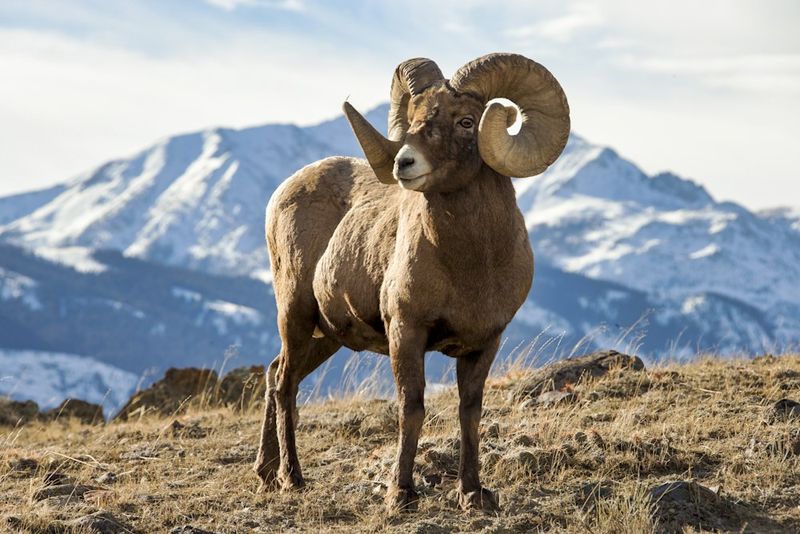
Perfectly adapted to America’s most vertical landscapes, bighorn sheep navigate sheer cliffs with astonishing agility. Their specialized hooves combine soft, grippy centers with hard outer edges – nature’s perfect rock-climbing shoes.
Male rams sport massive curved horns that can weigh up to 30 pounds. During mating season, they charge each other at speeds reaching 40 mph, creating thunderous crashes heard echoing through canyons.
Near-extinction in the early 1900s has been followed by successful reintroduction efforts. Today, places like Colorado’s Rocky Mountain National Park, South Dakota’s Badlands, and Arizona’s Grand Canyon offer opportunities to witness these magnificent animals performing gravity-defying feats on vertical terrain, demonstrating evolution’s remarkable ability to create specialists for even the most extreme environments.
14. Vibrant Roseate Spoonbill

Looking like something from a tropical fantasy, roseate spoonbills bring flamingo-pink splendor to southern coastal wetlands. Their distinctive spoon-shaped bills sweep through shallow water, using sensitive touch receptors to detect tiny prey.
The brilliant pink coloration comes from their diet of crustaceans containing pink pigments. Healthy wetlands with abundant food sources produce the most vibrantly colored birds, making spoonbills excellent indicators of ecosystem health.
Florida’s Everglades and Ding Darling National Wildlife Refuge offer prime viewing opportunities. Watching a flock of these prehistoric-looking birds take flight – their pink wings spread against blue skies – creates an unforgettable splash of wild color. Their recent range expansion northward brings hope for a species once decimated by plume hunters seeking their beautiful feathers.






